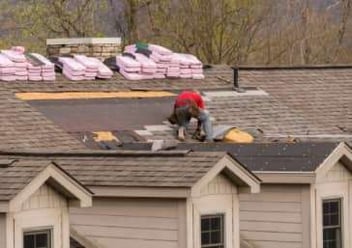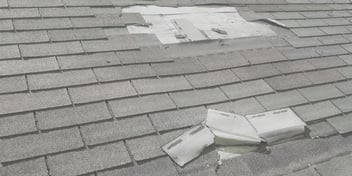- Home »
- Learningcenter »
- What are roof scuppers
What Are Roof Scuppers? A Comprehensive Guide

How do flat roofs avoid flooding during soaking rainfalls? It's all thanks to the roof scupper. An important factor in maintaining effective water drainage, the scupper is a must-have for flat or low-slope roofs. And don't you forget, it's also instrumental in reinforcing building durability.
It's important to familiarize yourself with the how-tos of scupper installation and care, especially if, like me, you're eager to protect a building's lifespan. You see, a well-maintained roof scupper has many uses beyond really important; it guards against these harsh, rainy punch-outs that can lead to potential water damage. In my opinion, caring for your scupper is equivalent to avoiding any rude water damage surprises from heavy storms!
Let's get started!
Channel-Type and Through-Wall Scuppers
Channel-type and through-wall scuppers have unique attributes and functionalities that tie directly to building factors. It's really important to know these differences; they're important for rooftop rainwater management success!
Take channel-type scuppers; they're open in design and slightly poke out from a building. They divert water beautifully from rooftops! They're made of sturdy things like copper, stainless steel, or galvanized iron. This provides them with impressive longevity and an ability to regulate flow. When you're dealing with water runoff, they're especially useful! Need more control over your roof's drainage? I'd say give these guys a chance. Flat roofs and water accumulation issues? Channel-type scuppers are a common find. However, be aware that debris or leaf blockages can be an issue. You might want to keep an eye on that!
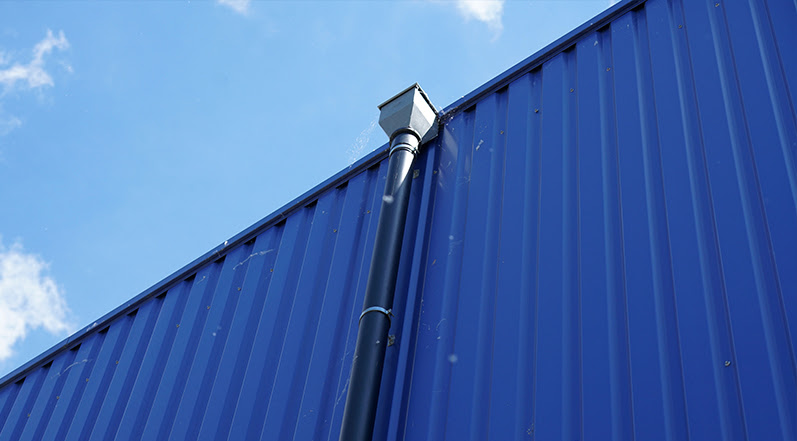
On the flip side, let's look at through-wall scuppers. Unlike channel types, these guys use a rectangular outlet right from the roof surface, straight into the wall; this is quite a departure. TPO, PVC, or different metals are what you typically find them made of. What's their claim to fame, you ask? They lead the way in water diversion within the wall structure!
Factor them into your building blueprint early, as their bond with the wall is a tight one. You won't find them clogging up, thanks to their snug spot within the wall. Here's a catch, though; their size comes as standard, which can make drainage management a bit challenging. Heavy rain; overflow - worrisome, isn't it?
Both scupper styles, while completely different, play a really important part in halting water buildups. Each has traits that make it the right fit for a particular structure or weather pattern. So, it's self-evaluation time! I recommend sizing up the characteristics, efficiency, and service needs of the two. We're hoping to find the one that hits the right note for your needs, yes? That's the important thing about choosing a roof scupper type. In my opinion, nothing beats understanding these factors - they could be your lifeline in preventing water damage and boosting your building's resilience and lifespan!
The Benefits of Roof Scuppers
Please don't underestimate roof scuppers; their part in roofing systems is important. Their simple design - is it not a fantastic advantage? While other roofing systems, like overly-hyped gutters, have complex designs that explode your maintenance bill, roof scuppers keep things simple. No nooks and no crannies - doesn't that mean fewer hidey holes for debris, too? It definitely minimizes the risk of pesky blockages. Doesn't it make efficiency and cost-effectiveness seem like two peas in a pod?
Here's a cool thing about scuppers - their resistance to clogs. How, you ask? Well, their large openings are a big part of it. Basically, it's a super antidote to the hurdles set by both natural and industrial debris. Remember those times of intense rainfall? Well, scuppers can boot water off faster than your average downspouts, dodging the water logging menace - isn't that great for your building's structure?
And my, oh my, the economic benefits of scuppers! Don't they just seem to offer more mittens for less moolah? They're real bargains compared to other drainage systems. Their design is simple, they're cheap to install, and they require barely any maintenance. Translation? These bad boys save you from costs cropping up again and again.
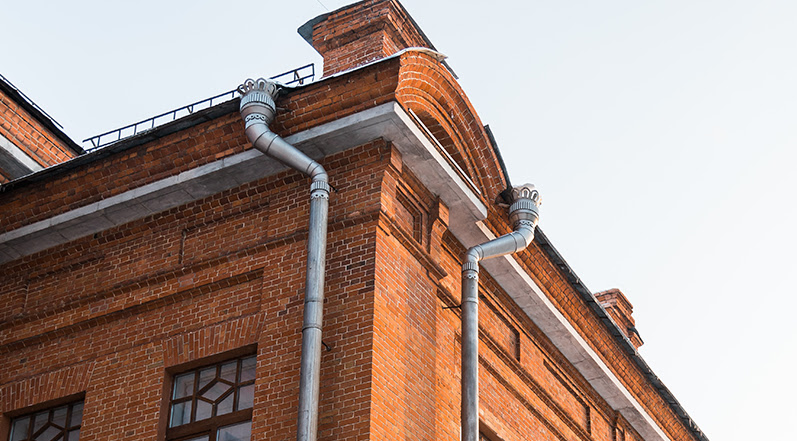
Setting aside their practical benefits, scuppers aren't just about utility. They can also amp up the aesthetics! Teamed up with downspouts, they're like the superhero duo, fighting the battle against water damage, driving down leak risks - isn't that really important for long-term building care?
So, here's the punchline - roof scuppers shield your building from potential water threats without digging a hole in your pocket. In my opinion, scuppers, with the help of downspouts, can really improve a building's drainage system. So the real question is, if you aren't using roof scuppers, how have you been surviving until now?
The Drawbacks of Roof Scuppers
Let's face it: roof scuppers do an important job in keeping floods at a distance. But guess what? They're open to blockages - and that's a real pain. Picture this: leaves, debris, or ice buildup can easily cause important hiccups in this drainage system.
What happens when a roof scupper gets blocked? It's simple: gutters get clogged, causing water backups that wreck the roof. And if you ignore it? Even worse. The damage could spread into your living spaces, leading to leaks. It's as if a dam within your residence suddenly decides to explode; that's a crisis for any homeowner!
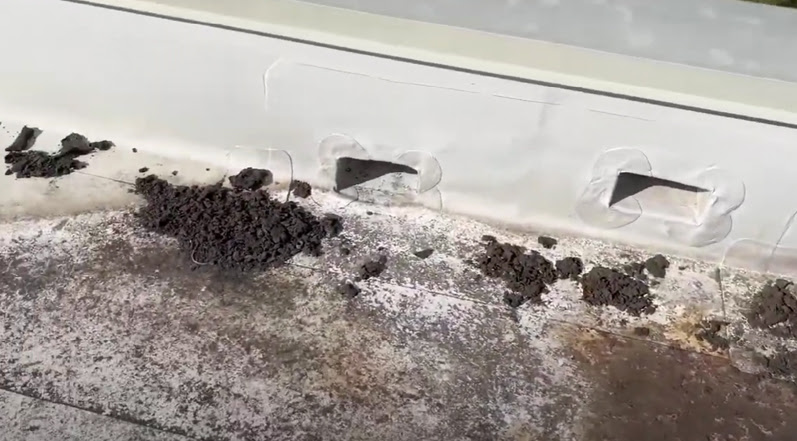
And if the scuppers were wrongly installed? Oh boy, you're in for a ride! Water could seep into your roofing parts, leading to decay, mold, and water damage. Add this to the steep repair costs, and it's no wonder proper installation matters so much!
So, you have to be thinking, how can I dodge all these problems? I bet you guessed it; regular maintenance is your assistant. But do you have measures in place to stop these issues before they crop up?
Regular inspections and quick unclogging are important to keep your roof scuppers in good shape. Ideally, I recommend checks twice a year or after major weather incidents - it's to safeguard your home from water-related damage.
And let's not forget; complex roofing systems might need pro "health checks." Experienced pros have a knack for catching little signs of wear and tear that, if left alone, could blow up into substantial damage.
The fact is, although roof scuppers are really important for handling rainwater, they're not bulletproof. They're threatened by blockages that need regular checks to prevent possible water damage. By taking care of your scuppers, you cut down these risks a lot, boosting the overall toughness and lifespan of your roofing system. So, what's your next move?
What Are The Code Requirements for Roof Scuppers?
Well, let's kick things off with a chat about the difficult regulations around roof scuppers; they really depend on where you're located and what your construction codes look like. The size of the looksy-hole matters - think about all the rainwater it needs to manage, especially on roofs with big surface areas or ones smack in the middle of rainy regions. You're going to need bigger scuppers to effectively whisk that rainwater away!
Where can you turn to for advice? I'd suggest the International Plumbing Code (IPC), which is a useful book that specifies the roles of your drainage pals, just about how your primary roof drainage scuppers must handle the maximum amount of expected rainfall - like a champ. On the flip side, the second-stringers, the backup overflow mechanisms, should be able to handle rain beaten out by a once-in-five-year level storm. So, you might ask, how in the heavens do I work out the needed scupper size?! Well, just dip into your local storm data, my friend.

Addressing construction and installation - let's dig a bit into that. Your scuppers have to be made and placed with perfection to avoid any pesky leaks. Getting their height right is flippin' important, too; you want 'em lower than the roof's structure but still above the roof surface. Why? So, you can peacefully let water drain without causing a ruckus to the building.
In terms of parts, you have to choose ones tough enough to laugh in the face of corrosion and sturdy enough to handle the weight of the gushing water. Now over to layout - make sure the open side of your scupper is nice and level with the roof. Why? Well, it needs to be all horizontal so the water can properly vamoose off the roof edge.
Want a piece of my mind? Cluing up on these rules and pieces of advice will make sure your scuppers don't let you down. Just remember - the capacity of your whole roof drainage setup hinges on the wimps in the system, like the scuppers. So careful planning for your "looksy-holes," considering their size, style, and where to pop 'em, is important to handling roof water drainage with flying colors! Trust me; it's incredible.
Placement, Size, Material, and Support
Let's get something clear here: you need to know the basic things involved in installing scuppers. Think about placement, size, the kind of material, and how stable it is. All these things matter a lot when you're thinking about how long that bad boy's going to last.
The question of where you put your scuppers, right? Can I tell you how important that is? For the best way to drain water, put your scuppers where the water collects on the roof - the pooling spots. If you don't put them there, you could end up with poor drainage, and that could mean trouble. Water might sneak into the structure of your roof.
How big should your scuppers be? Believe it or not, that's a big deal too. You have the International Plumbing Code giving guidelines to make sure your scuppers can handle an absolute downpour. If you get your scupper size right, along with the drainage needs of your roof, it's like giving your roof shields against nasty weather.
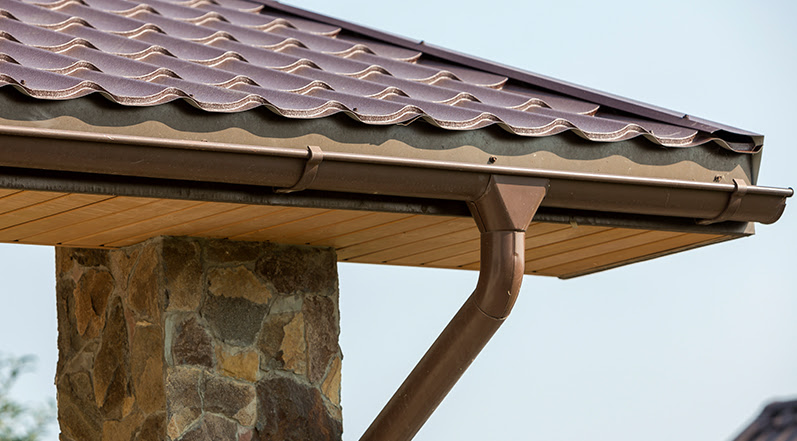
Which material should you choose for your scuppers? Listen up; this is another important point. You want to go for tough things like copper, stainless steel, PVC, or TPO. If you pick the right parts, your scuppers can resist different weather conditions and carry a lot of water without buckling. I'd recommend you don't go for lesser parts, or you might find yourself with leaks and a wallet that's feeling a little lighter.
Okay, last but definitely not least, your scuppers have to stay put. It's like this - installing things like brackets or flanges gives them that extra support and keeps them stable. If they aren't well supported, they might fall out of place or stop working properly.
Can I give you some advice? Get some pro help when you're installing scuppers. These guys can spot any possible problems and make your drainage system better. It'll save you from future headaches and let you sleep easier.
It's pretty simple when you break it all down - knowing all these ins and outs helps you get your drainage system just right. It's about preventing water damage to your building; get this done right, and you'll see how important your scuppers are for the whole drainage performance of your roof. It's worth getting it right!
The Importance of Regular Scupper Maintenance
Keeping up with regular roof scupper maintenance improves durability and efficiency while reducing potential water damage. This means you need a consistent cleaning plan, good eye for details, and taking some proactive steps.
A well-looked-after roof scupper speeds up water discharge; clearing the path by getting rid of things like leaves, twigs, or trash that could clog the water flow is important. Want a trick to keep things under control? Make it a point to clean up often, especially after harsh weather bouts or in spots where leaves and debris pile up a lot.
After turbulent weather, it's a great idea to check your scuppers twice a year. An all-out visual check can spot clogs and piled-up debris. It isn't enough to just scrub and wash, though; keep an eye out for worn-out areas, rust, or visible damage to your scuppers. Ignored problems might spiral into expensive repair jobs, and we don't want that, do we?

Take into account your building's alignment and weather conditions when minding the scuppers - also called pitch. For efficient water flow, the pitch should be right for the scupper. Throughout the check-up, make sure the seal around the scupper is still solid; a weak or worn-out seal could spring leaks or let water seep into the roof.
Being proactive in your upkeep is like fortifying your defenses against unexpected issues. Would you believe that adding a water-resistant coating actually toughens up the scupper, prepping it against the features? In the same line, placing strainers or shields above the scuppers helps prevent debris from stacking up.
No two ways about it; consistent care is important. Scuppers are champs at keeping water damage to your building at a distance. A blocked or broken scupper could lead to standing water, bringing on roof troubles, leaks, structural damage and, eventually, a solid punch to your wallet. So, regular scupper maintenance has many uses beyond nice to do - it's a solid shield for your roof and the longevity of your building!
Protect The Roof Over Your Head
When you take a close look at roof scuppers, you'll notice they're important for effective water drainage - especially if you Have a flat or low-slope roof. There are two main types: channel-type and through-wall. Each one comes with benefits depending on things like the type of your building and the climate it's in. The takeaway here? Properly maintained and correctly installed roof scuppers make for a great, budget-friendly defense against the high costs of water damage to your spaces. So, really, how did you ever manage without roof scuppers in your building design?
Delving deeper into the space of roof scuppers has many uses beyond knowing why they matter; it involves spotting potential glitches like blocks and bad installations, too. These issues underline why you ought to stick to regular check-ups and expert checks. On the money is the fact that trouble-free running of roof scuppers needs your focus, good calls, and actual involvement. Are these things on your mind right now as you're thinking about what's best for your building?
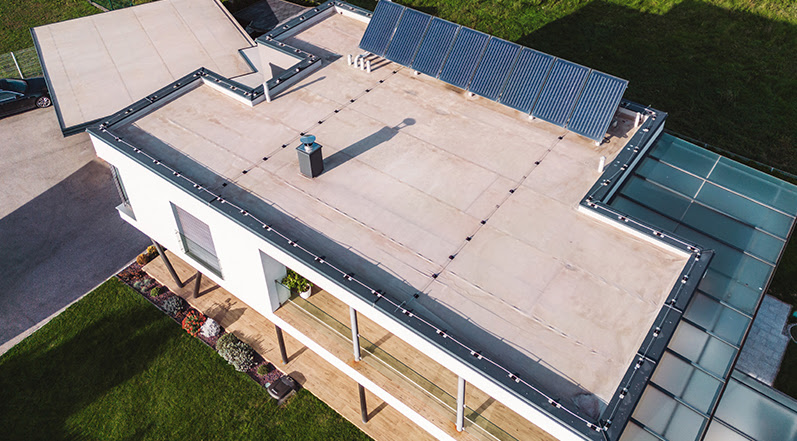
Sure, figuring all this out can get a bit tangled. That's where we step in - our crew at Colony Roofers, serving the fine people in Georgia, Florida, and Texas. We're here to handle all your commercial and residential roofing needs. Hand over your roofing worries to us, and you'll do more than guard your property investment; you'll lock in your own safety, too.
Why worry over complex details when there's expert help at your fingertips? Schedule a no-cost inspection with us to see the quality of service - and knowledge - that sets Colony Roofers apart. I think working together is the way to make sure your roofing system is tough and ready to stand up to anything! In my opinion, when it comes to roofs, it's smart to trust the pros. Why not contact us today for a free roof inspection?
 Call (678) 365-3138
Call (678) 365-3138

